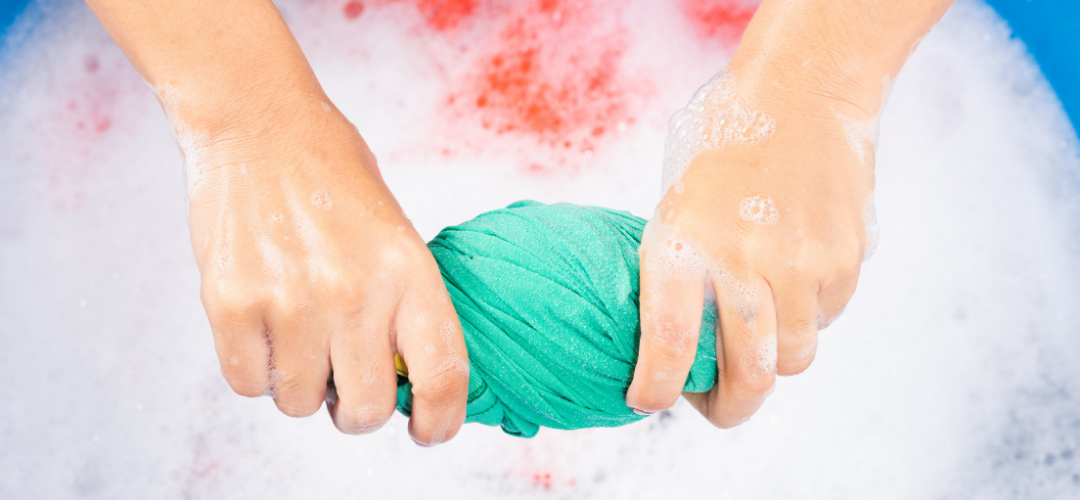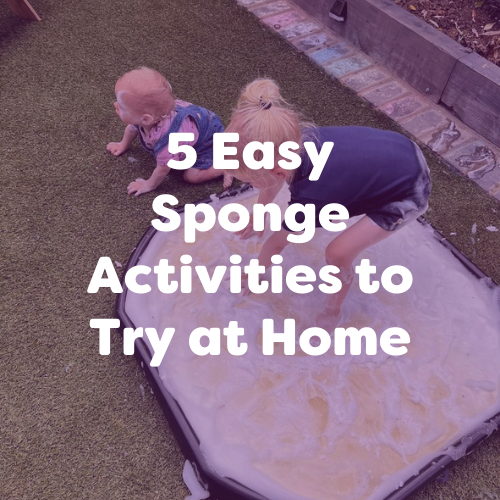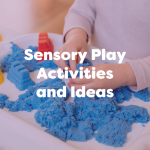Sponges are an inexpensive resource that can be used in a variety of different ways to support early childhood development. In this blog we share 5 ways to use sponges of different sizes and shapes in learning and play. These sponge activities have been carefully selected to cover key areas of the EYFS including expressive arts and design, fine motor development and early maths understanding! Read on for simple but fun sponge activities to try in your setting.
1. Sensory Foam
Sensory play is a great way for children to explore their world. It can help them to learn more about different textures, as well as develop their motor skills and improve imagination.
Using our Tuff Tray Sponge Mat, start by adding a generous amount of dish soap or bubble bath to the tuff tray. Then, pour water all over the mat and get splashing! Soon foam will appear, creating a fun sensory experience for all. Your little ones will love this activity on those warm summer days in particular and can be entertained for hours!
The sensory aspect of the water and bubbles is entertaining the kids so much! They both can’t leave it alone.
Danie Prior (@the_little_adventurer_)

2. Sponge wringing
Wringing water from a sponge is a fun and easy way to develop and strengthen the muscles in your little ones’ hands, fingers and wrists!
Start by soaking a sponge in a bucket of water until it is completely full of liquid. Then encourage your little ones to squeeze and squish the sponge with both hands until all the excess liquid has drained. The more this is done, the stronger your child’s hands will become!
Why not turn this activity into a competition and encourage your little ones to compete in a race to fill their containers the fastest by wringing out their sponges!
Alternatively why not introduce early maths concepts into this activity and encourage discussions with your children about the weight of the sponges before and after they have been wrung

3. Mark making in colourful foam
Like the sensory foam activity, mark making on the Tuff Tray Sponge Mat is a great way for children to discover textures whilst also improving their pre-writing skills!
Start by adding a few drops of food colouring to some water. Next, add your dyed water to the Tuff Tray Sponge along with some soap or bubble solution to create a sensory foamy area.
Then, use mark making tools such as rolling pins, combs, or paint brushes to move the foam around. See what shapes and patterns your little ones can make on the sponge, can they write a word in the foam?

4. Printing shapes
Sponge printing is an easy way to introduce mark making. It can be used for many things such as making greetings cards, wrapping paper, or making a piece of art.
Simply grab a piece of paper, a sponge shape and some colourful paint. Dip the sponge into the paint and press it firmly onto the paper. Lift it up and see the art you have created!
Why not try printing shapes onto a larger, damp sponge? See how the colours flow and mix with each other. Then, keep your artwork forever by placing a Tuff Tray paper pad on top of the larger sponge and watch as your art transfers to the paper.

5. Primary Colour Mixing
Using the Tuff Tray sponge mat, pour a blobs of red, yellow, and blue paint in each corner. Encourage your children to dip their hands into the primary colours and make hand prints all over the sponge. Repeat with the new, other colours created, by printing over your other hand prints. Watch as the colours mix together! Which colours can you make?
This activity not only involves fun messy play but offers children the opportunity to begin to understand colour and colour mixing – early maths and scientific concepts that can be used in later learning.

We would love to see your favourite sponge activities! Share your play with us on social media by tagging us or using the hashtag #ExploreWithEYR



